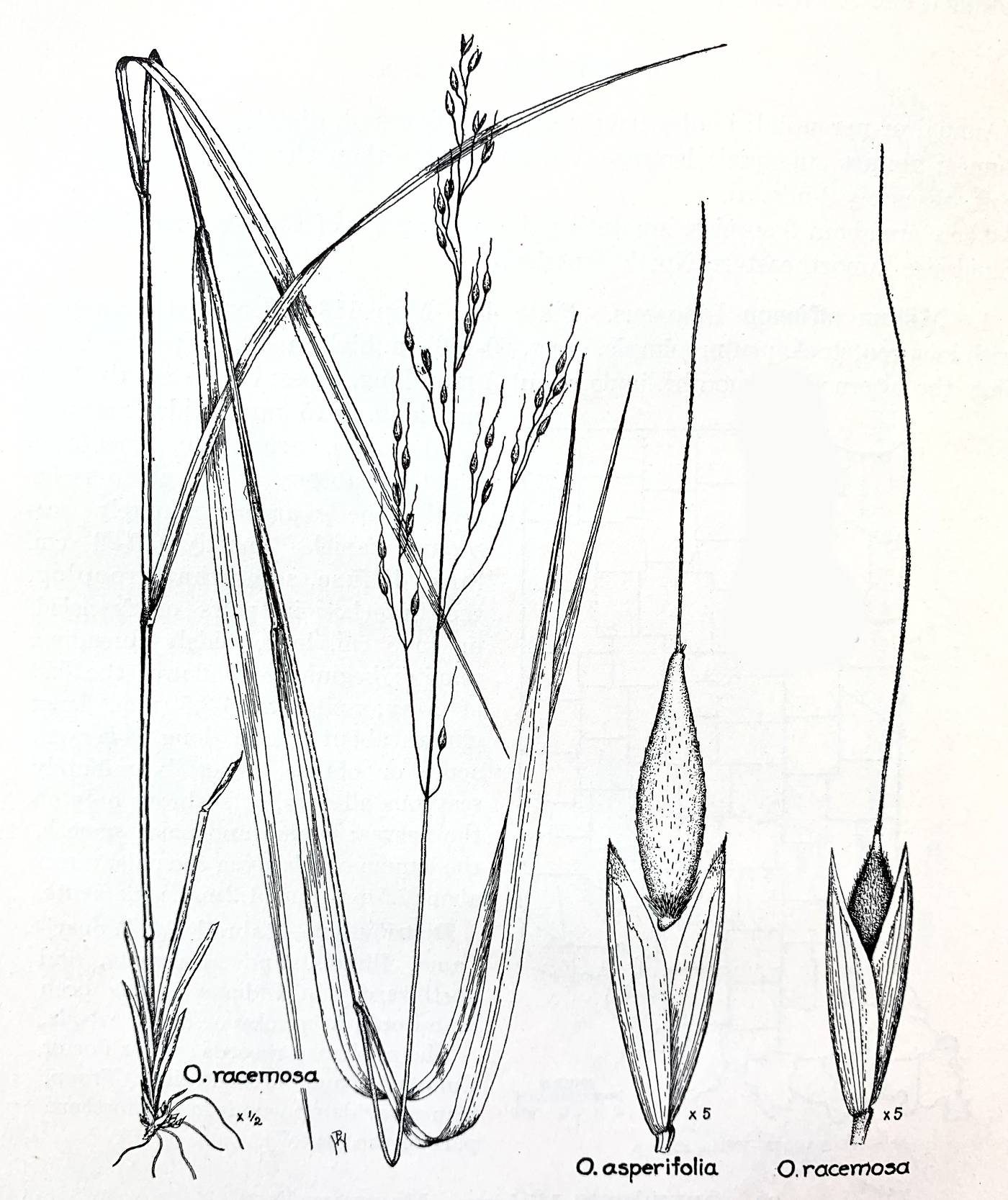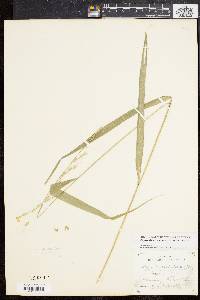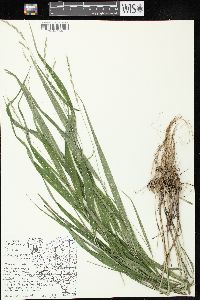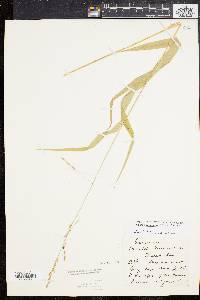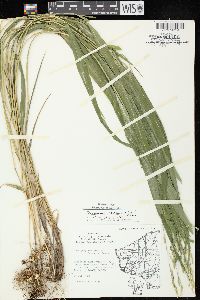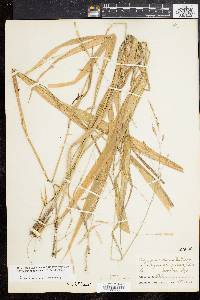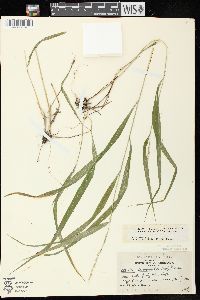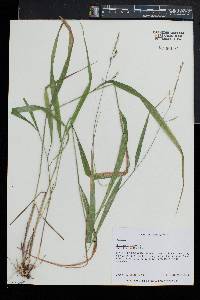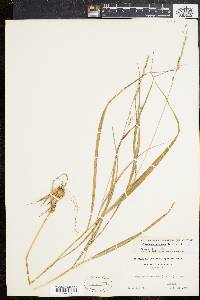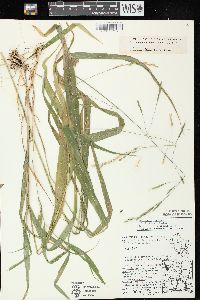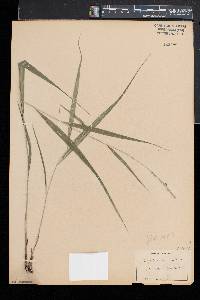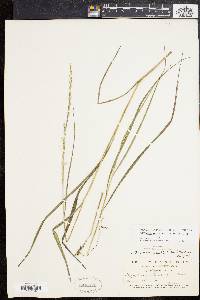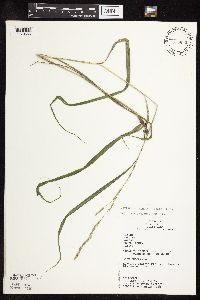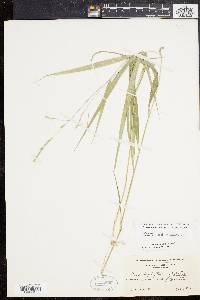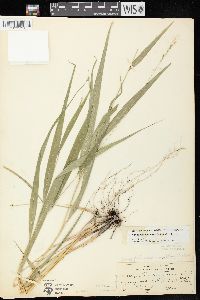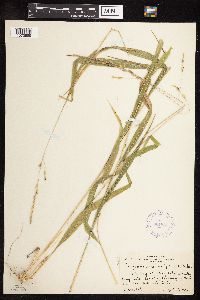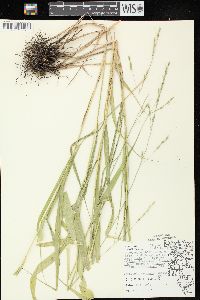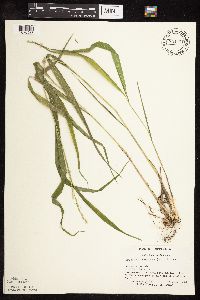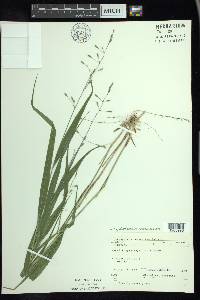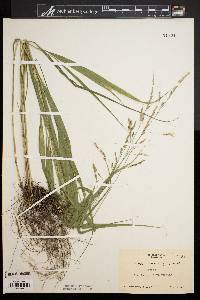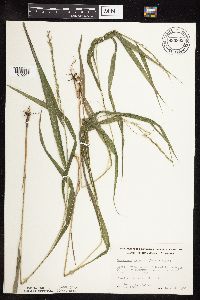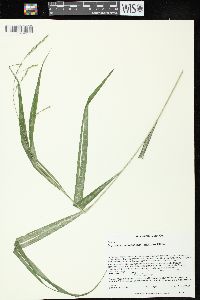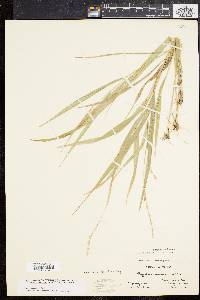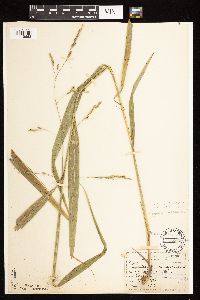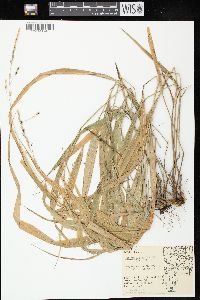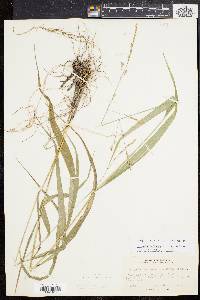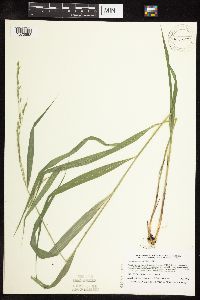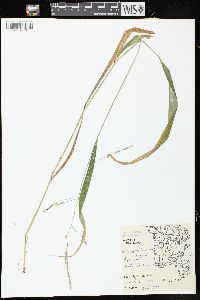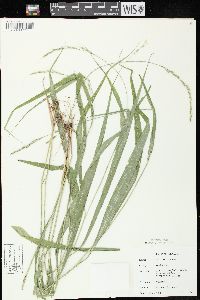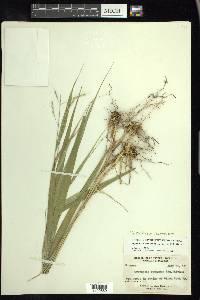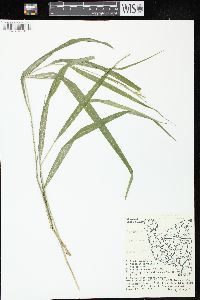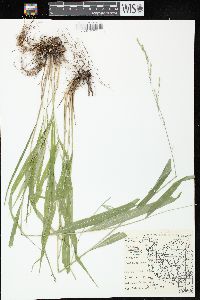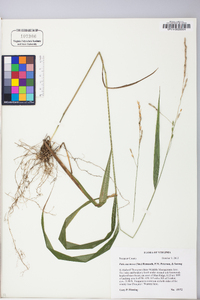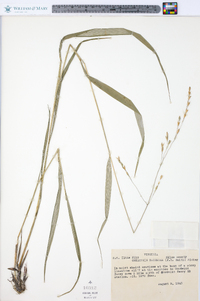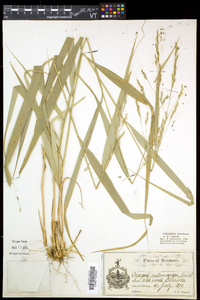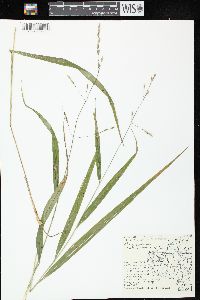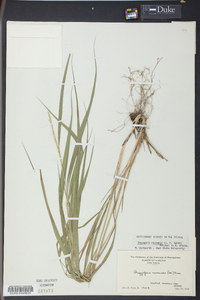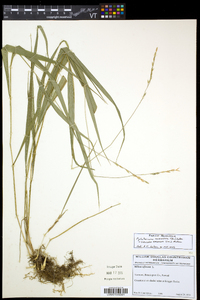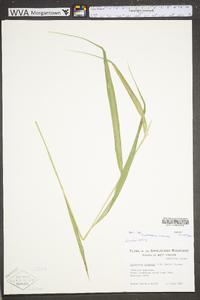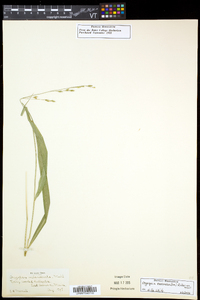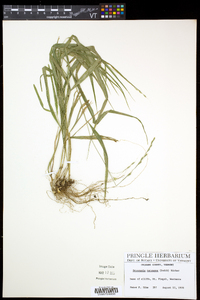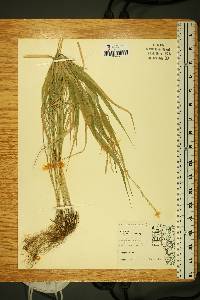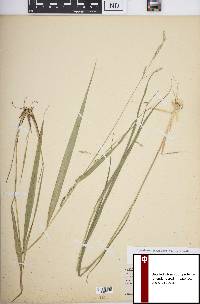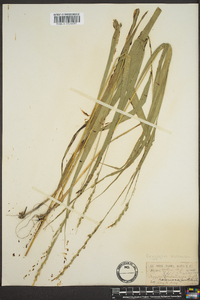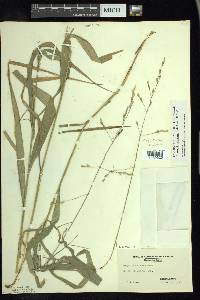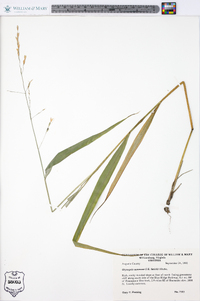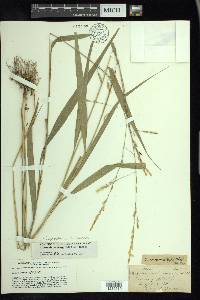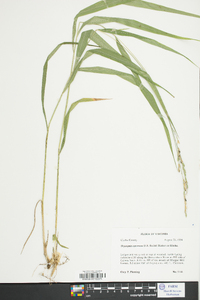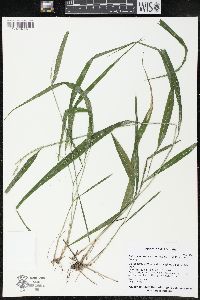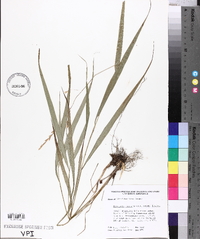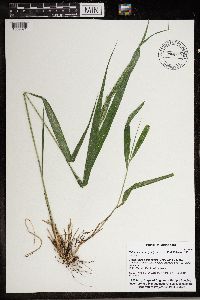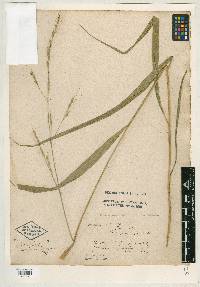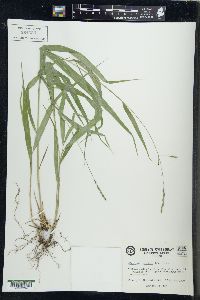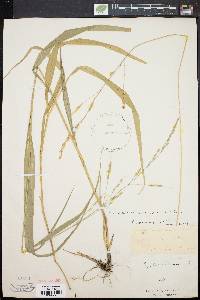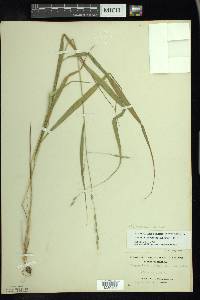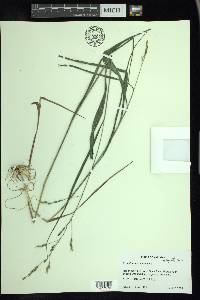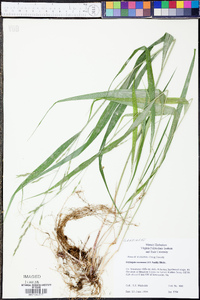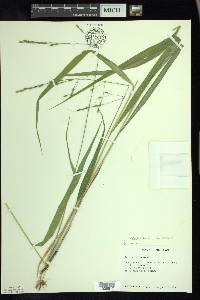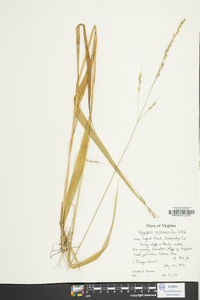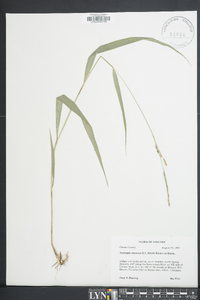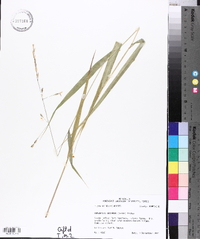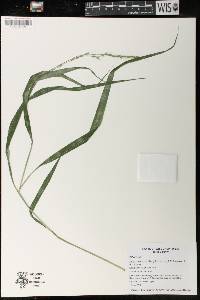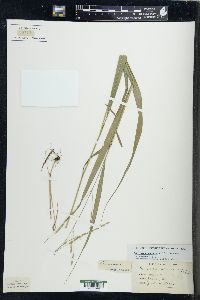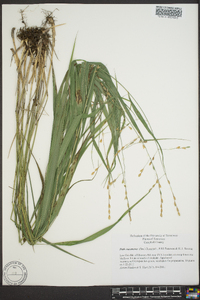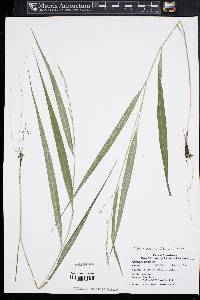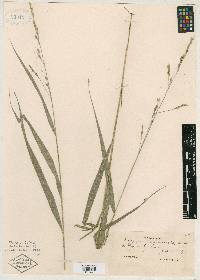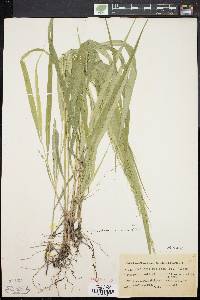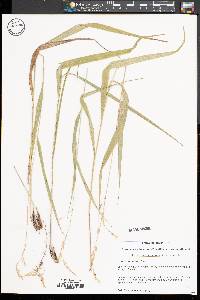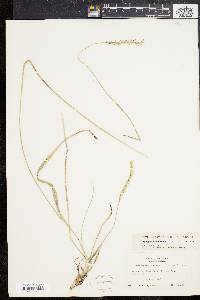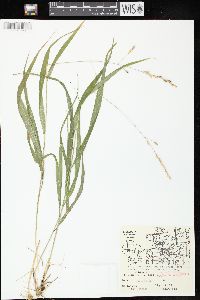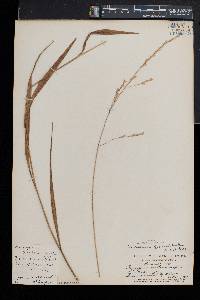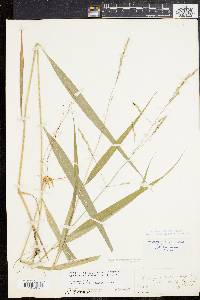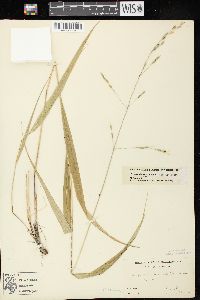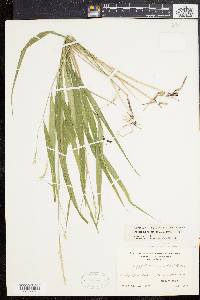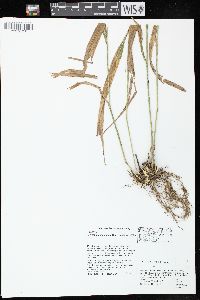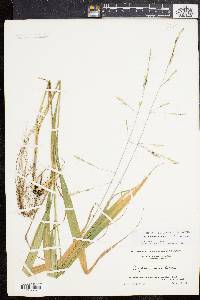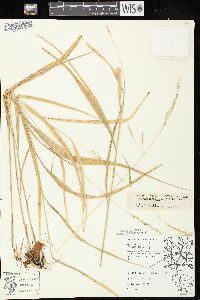
|
|
|
|
Family: Poaceae
Blackseed-Rice Grass, more...Blackfruited-Rice Grass, Mountain Ricegrass
[Oryzopsis melanocarpa, moreOryzopsis racemosa (Sm.) Ricker ex Hitchc., Piptatherum racemosum (Sm.) Barkworth] |
Plants loosely cespitose to soboliferous, rhizomatous. Culms 48-80 cm, scabrous or pubescent adjacent to the nodes; basal branching extravaginal. Leaves not basally concen-trated; sheaths usually smooth and glabrous, occa-sionally scabridulous and inconspic-uously pubescent near the margins; ligules of upper leaves 0.3-0.7 mm, truncate; blades of basal leaves 0-2 cm; blades of upper leaves 10-27 cm long, 8-16 mm wide, abaxial surfaces evenly but sparsely pubescent, adaxial surfaces with straight hairs to 0.3 mm on the primary veins and flexuous hairs of 0.5-0.9 mm on the minor veins, tapering from near midlength to the apices. Panicles 12-25 cm, lower nodes with 1-2 branches; branches 3-9.5 cm, straight, strongly ascending to strongly divergent, with 2-5 spikelets. Glumes 6-8 mm, from subequal to the florets to exceeding the florets by 2 mm, ovate, 5-7-veined, acuminate; florets 4.5-7.5 mm; calluses 0.3-0.6 mm, disarticulation scars circular; lemmas coriaceous, sparsely pubescent to glabrate throughout, margins fused at the base, not overlapping, shiny dark brown to black at maturity; awns 10-25 mm, deciduous, slightly twisted, flexuous; anthers 3.5-5.5 mm, not penicillate; ovaries developing 2 conelike extensions, each terminating in a style. Caryopses 5-6 mm; hila linear, 4/5-9/10 as long as the caryopses. 2n = 46, 48. Piptatherum racemosum usually grows in deciduous woods, and less often in open pine woods, in rocky, mountainous areas, from the St. Lawrence and Ottawa rivers south to the Missouri River, Tennessee, and Virginia, and east to Maine. The absence of basal blades and the dark, shiny lemmas distinguish it from all other North American Stipeae. It is highly palatable to livestock, but is never sufficiently abundant to be important as forage. Loosely tufted from a knotty rhizome, 4-10 dm; principal lvs cauline, scaberulous above, pubescent beneath, the blades mostly 10-20 cm נ8-15 mm, with many fine veins; lower lvs ±reduced, the basal sometimes to mere sheaths; ligule minute or none; panicle sparsely branched, 1-2 dm, the few straight branches spreading or ascending, bearing the few appressed spikelets toward the end; glumes herbaceous, narrowly elliptic, acute or short-acuminate, 7-9 mm, distinctly 7-veined; lemma 5.5-7 mm, dark brown and shining; awn 12-22 mm; 2n=46, 48. Dry to moist woods and wooded dunes; Que. to Ont., Minn., and N.D., s. to Va., Ky., Mo., and Nebr. (Piptatherum r.) Gleason, Henry A. & Cronquist, Arthur J. 1991. Manual of vascular plants of northeastern United States and adjacent Canada. lxxv + 910 pp. ©The New York Botanical Garden. All rights reserved. Used by permission. From Flora of Indiana (1940) by Charles C. Deam The specimens found in the southern part of the state are from rocky woods and those from the northern part are from moist or dry, sandy woods. It is very local and I cannot account for its widely different habitats and limited distribution. …… Indiana Coefficient of Conservatism: C = 8 Wetland Indicator Status: N/A |

